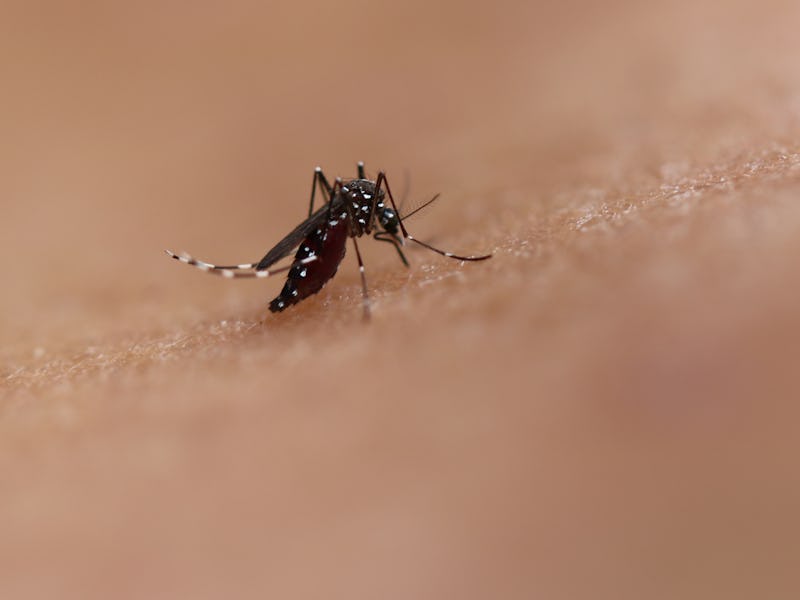Zika discovery: One plausible mutation could make the virus more dangerous
The finding underscores the importance of surveillance studies.

One mutation may make the Zika virus more infectious and better able to evade existing immunity, new research shows.
On Tuesday, a team of researchers in California, Texas, and Mexico published a study in Cell Reports outlining how a predictable change in just one amino acid could yield a more infectious, immunity evading Zika virus. The findings should serve as a broad warning about the importance of getting ahead of virus mutations and pandemic preparedness as a whole.
Sujan Shresta, an immunologist at the La Jolla Institute for Immunology in California and one of the lead researchers on the study tells Inverse, “Just like we should be doing surveillance studies everywhere in the world the coronavirus is, this study tells us we should be doing the same for Zika.”
The background — The Zika virus was first discovered in 1947 in Uganda. It is primarily transmitted to humans via mosquitos but can also be transmitted through some bodily fluids; it is typically found in warm, tropical areas where mosquitos thrive. There hasn’t been a confirmed case in the United States since 2017; the majority of cases have occurred in Latin America and Southeast Asia, though they are possible in any tropical environment with Aedes mosquitos.
The vast majority of adults — nearly 80 percent — never show symptoms. That doesn’t mean it’s innocuous for 80 percent of the people who contract it, however, the consequences — especially for people who are pregnant — can be dire.
In pregnant people, a Zika infection can cause serious neurodevelopmental disorders in the fetus. In adults, the virus has also been linked to Guillain-Barré syndrome, though causation has not been definitively established.
When viruses infect people, it’s actually a “dance between the virus and our immune system,” Shresta says. “When Zika first emerged in the Americas, back in 2015, we realized that it was arriving in these countries where the vast majority of the people have already been exposed to dengue, which is closely related to Zika.”
Zika is in the same family of diseases as dengue fever, and the researchers soon realized that immunity incurred by a dengue fever can, in the short term, protect against symptomatic Zika infection and vice versa.
In this latest study, Shresta and her colleagues found that a single mutation could change that.
What the researchers did — Shresta and her colleagues wanted to understand how Zika might evolve. Anticipating mutations, she says, can help people take better precautions to avoid infection as well as serve as important information for the development of Zika-specific viral treatments and vaccines, neither of which currently exist.
A mutation in the Zika virus could make it more dangerous, new research shows.
To assess how the virus might mutate, they simulated the virus being passed back and forth between mosquitos and humans using mosquitos and mice (which have been shown to be a reliable corollary for how humans respond to the virus; it’s how Shresta and her colleagues first determined that immunity from dengue could be protective against Zika).
As the virus passed back and forth, the researchers monitored small changes that occurred in the virus’ genome.
What they found — The researchers found that it was relatively easy for the virus to mutate in such a way that changed a single amino acid in its genome. Amino acids are the building blocks of proteins. In particular, the new amino acid appears to make the virus more infection — making it easier for infections to take hold and the virus to replicate in the body.
The same mutation occurred in mice that had recently been exposed to dengue as well as those that hadn’t, suggesting the immunity typically conferred by a dengue infection wouldn’t be protective with this variant.
What’s next — The biggest takeaway from the study, Shresta says, isn’t simply that they’ve identified a more infectious, immunity-evasive variant.
“There are two ways to interpret these results,” she says. “One is ‘this is a super virulent, Zika variant in which there is one mutation in this variant, there are no other mutations to look for.’ But I think that’s the wrong conclusion.”
The researchers did 10 cycles of passing the virus back and forth between the mice and mosquitos before the variant occurred.
“What if we had done 20 or 30,” she says. “And we looked at the viral population after only three days. What if we had looked at 10 or 20 days?”
The study should instead underscore the importance of trying to prevent giving the virus an opportunity to mutate with mitigation measures like insect repellant, as well as the value of surveillance studies such as this one to identify how a virus might mutate in the real world. This need has become especially evident as the SARS-CoV-2 virus continues to mutate in ways that make controlling the pandemic difficult.
While the exact mutation they identified has not yet been found in the real world, the sequences of real-world Zika mutations support the possibility.
“We looked at almost 900 sequences that have been published. Two of them have a mutation—not this exact mutation, but a mutation in the same position. That tells you this is possible even in humans for a mutation in this position,” Shresta says.
No one can say for sure if this exact mutation will ultimately appear in the real world, she adds, but “this work is telling us that we should be aggressively monitoring it.”